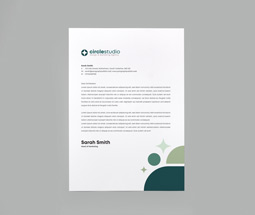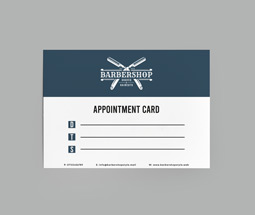Updated: 7 Jun 2022
During the Coronavirus pandemic, many turned to their kitchen as a new-found source of revenue, selling their goods online and in the local community. From casual cake baking to brilliant brownie bakers, we’ve perfected a recipe for success to help you cake it ‘til you make it and launch your home baking business into the world. If you think you can *rise* to the challenge (okay, we’ll stop), read on…
Why Should You Start a Home Baking Business?
With a 20% rise in home baking businesses over the past year alone, there are (muffin) baskets of reasons why starting up is a fantastic idea for any budding baker, such as:
- You can express your creativity through your cake baking
- There’s always a market for delicious baked goods – and plenty of niche markets for you to delve into
- You can sell online to a large market or locally
- Creating things for special occasions to put a smile on someone’s face
- Getting paid for doing what you love – that’s the dream, isn’t it?
Home Baking Business Ideas
If there’s something in particular that you’re good at, why not become an expert in that area? There are lots of bespoke home baking business ideas to get your teeth into! Here are a few:
- Celebration cake baker
- Sweet treat boxes
- Specialist in catering for vegan, dairy or gluten-free bakes
- Cake decorator
- Dessert delivery service
- Bread baker
- Home-based pastry chef
- Doughnut baker
How to Start a Baking Business from Home in the UK
Step 1: Register your home baking business
Before you sell even your first cake pop, you’ll need to register with HMRC as self-employed. This is so the HMRC knows how much you’re earning and properly collect income tax.
Register online here to receive an email with 10-digit Unique Taxpayer Reference (UTR). HMRC will also set you up with an online account where you can access lots of different resources to help to set up your home baking business.
If you’re working on your own, you’ll also need to set up as a sole trader. This is super simple – you just need to tell HMRC that you’re a sole trader! If you’re working with others, such as a partner or employee, you’ll need to register as a limited company.
At this point, you’ll also need to think about a name for your business.
Step 2: Follow food regulations
When you’re using your own kitchen to start a baking business from home, it’ll need to be even cleaner than usual.
Although ‘regulations’ might sound a little intimidating, a lot of it is common sense. However, you should think about getting a food hygiene certificate, namely taking a level 2 course if you’re new to working with food, which will give you a good overview of the regulations you’ll need to follow.
Try to keep your personal items in a separate fridge, and, if possible, keep pets out of your kitchen. You should also keep your children out while you’re working.
Step 3: Register your premises
28 days before you start selling your goods, you’ll need to register your premises as a food business with your local environmental health service.
Once registered, you may be inspected by your local authority and will be rated out of 5 using the Food Hygiene Rating Scheme, which looks at the following:
- Handling of food
- How food is stored
- How food is prepared
- Cleanliness of facilities
- How food safety is managed
Step 4: Get insured
Business insurance is a key step when setting up your home baking business. Public liability insurance and product liability insurance are usually sold together and can be used to protect you from claims against your food causing damage or illness, or if you accidentally cause damage to your customers’ property when delivering their order.
Step 5: Permissions
If you live in a rented property, you’ll need to get your landlord’s permission before starting a baking business from home. This shouldn’t be an issue, however, as the law states your landlord can’t unreasonably withhold or delay their permission.
If you’re living in your own home, you may need permission from your mortgage lender.
Step 6: Find your unique selling point
With heaps of home baking businesses starting up during the pandemic, you need to figure out why people should choose your baked goods over anyone else’s. Is it because your flavours are the most creative? Your decoration the most stylish? Or do you cater to different allergens and dietary choices?
Once you’ve found your unique selling point, you can begin to build your cake baking brand around it, choosing colours and styles that will appeal the most to your target audience.
Step 7: Set up online
Creating an online presence so even more people can find (and fall in love with) your delectable goods is a great way to spread the word about your home baking business.
You can create a website using software like wix.com, and set yourself up as a brand on social media. Make sure all the pictures of your bakes that you take are high quality with good, natural lighting for the best first impression.
Step 8: Pricing
One of the biggest questions entrepreneurs ask themselves is: how much should I charge for my cake baking?
First off, we recommend figuring out the price at which you break even – how much would you have to charge to make it worth it? That includes the cost of the ingredients, your time and overheads for the year (e.g. insurance, equipment and utility costs).
It’s also a good idea to look at the prices your competitors set for similar products to get an idea of what customers are willing to pay.
You can always tweak your prices if you find your product is too expensive or you manage to make savings elsewhere, so make sure to keep an eye on your in-goings and outgoings and change accordingly.
Step 9: Brand your packaging
Adding your branding to your packaging is a great way to add a professional touch and make a delivery more memorable. Adding stickers with your logo design on, using colourful greaseproof paper and even including a postcard to say thanks for the order are all small things that make a big difference.
Need More Guidance?
We hope this guide to setting up your own home baking business has helped you take the first steps in starting a baking business from home. From flyers and business cards to stickers and postcards, make sure you’re fully stocked up on marketing essentials to keep driving your business forward.
If you need any further help with how to start a baking business from home or want to know more about our products, contact us here.









